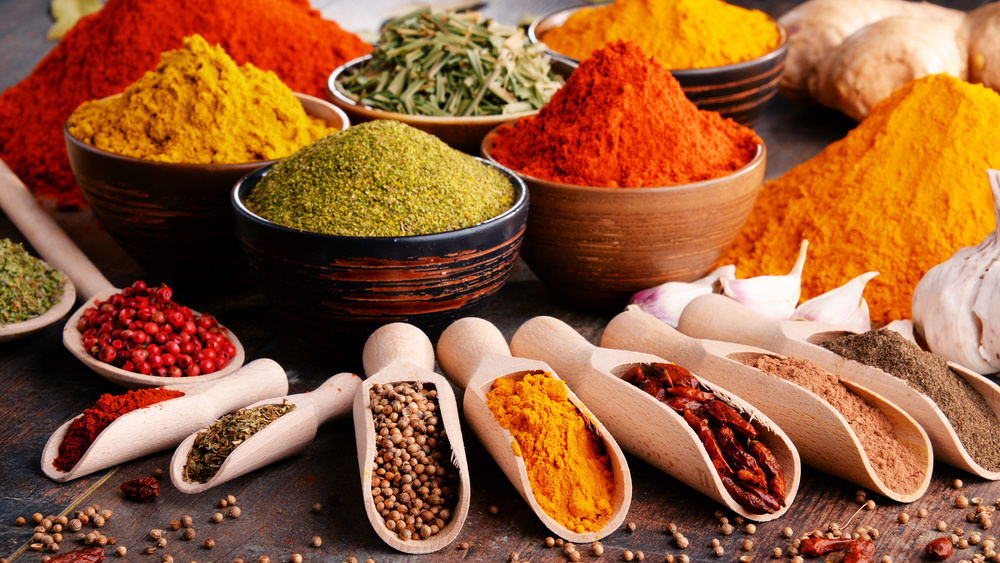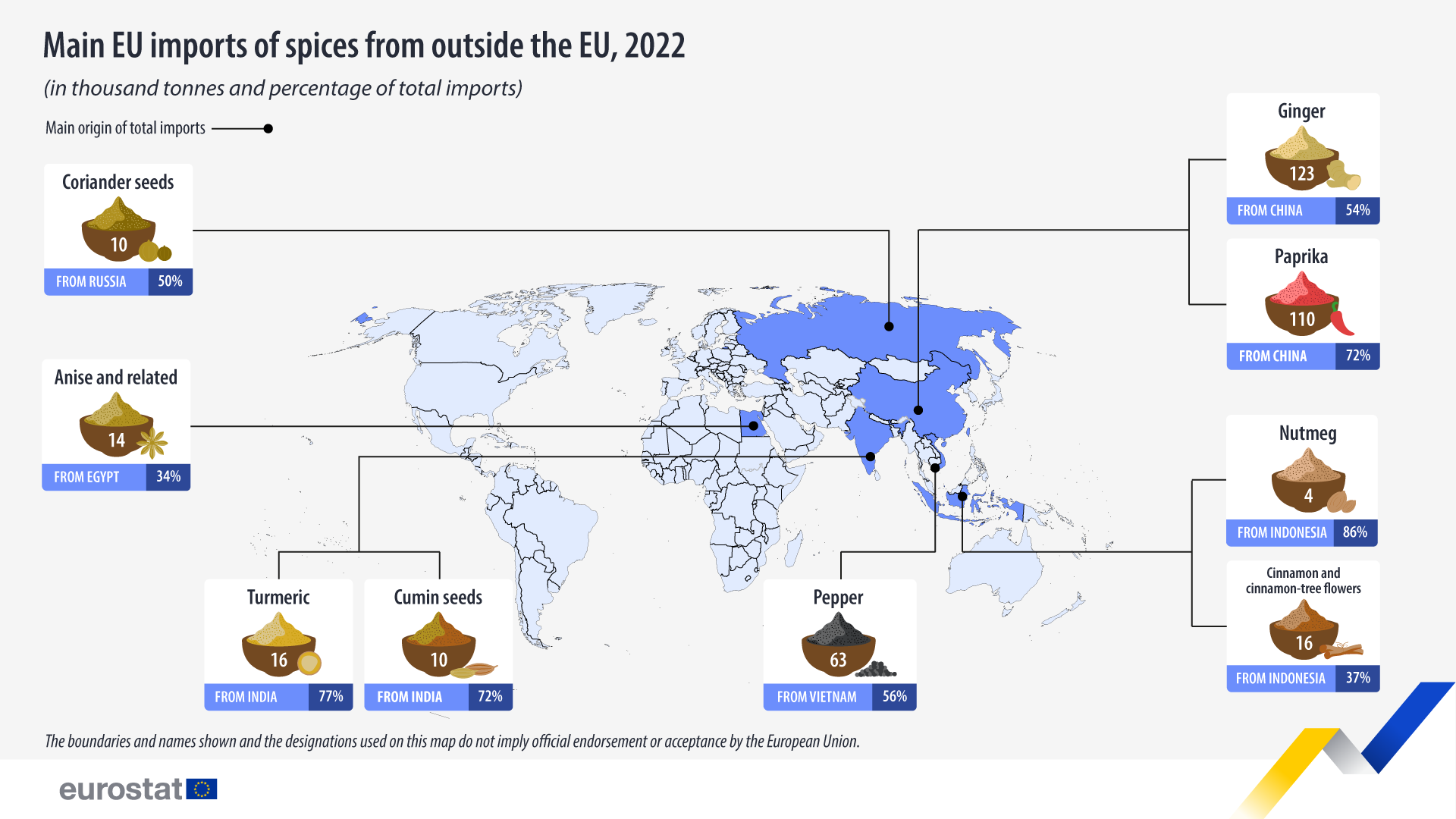Spice it up: EU imports of spices in 2022

In 2022, the EU imported 397 000 tonnes of spices from extra-EU countries. China was the primary source of spices, contributing 38% to the total imports of spices into the EU.
To mark the festive season and the aromatic ambiance of winter kitchens, we look at the different spices imported by the EU.
The most imported spice was ginger with 122 900 tonnes, followed by paprika (109 800 tonnes) and pepper (62 900 tonnes). China was the main country of origin for ginger (54%) and paprika (72%), while pepper was mainly imported from Vietnam (56%).
Imports of cinnamon (16 200 tonnes) ranked fourth, with more than one-third originating from Indonesia (37%). Turmeric (15 800 tonnes) held the fifth position among the most imported spices, with the majority of imports coming from India (77%). As for anise and related spices (13 600 tonnes), Egypt (34%) was the main supplier.
Cumin seeds (9 600 tonnes) came largely from India (72%), followed by coriander seeds (9 500 tonnes), half of which were imported from Russia (50%) and nutmeg (4 400 tonnes), predominantly imported from Indonesia (72%).

Source dataset: DS-059322
Compared with 2012, the weight of the spices imported from the extra-EU countries increased by more than half (+57%). EU imports of ginger and turmeric more than doubled (+149% and +142% respectively), recording the largest increase among the most traded spices. Only imports of nutmeg decreased by -4% since 2012.
For more information
Methodological notes
The following Combined Nomenclature (CN) product codes were used for the analysis presented in this news item:
- Pepper: 090411 and 090412
- Paprika: 090421 and 090422
- Cinnamon and cinnamon-tree flowers: 0906
- Coriander seeds: 090921 and 090922
- Cumin seeds: 090931 and 090932
- Anise and related spices: 090962 and 090961
- Ginger: 091011 and 091012
- Turmeric: 091030
- Nutmeg: 090811 and 090812
If you have any queries, please visit our contact us page.
